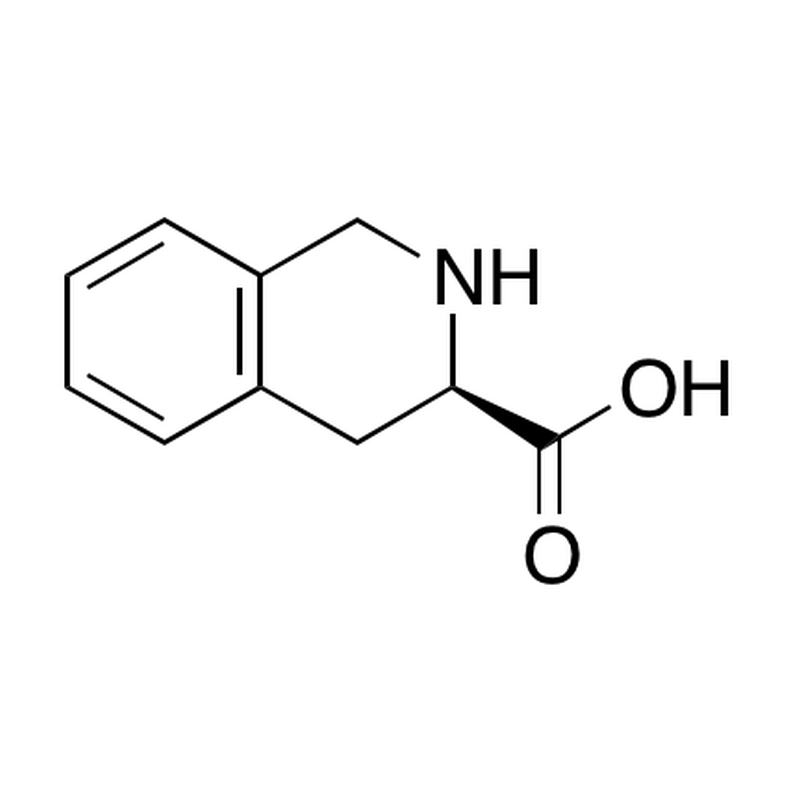产品
编 号:F016174
分子式:C10H11NO2
分子量:177.2
分子式:C10H11NO2
分子量:177.2
产品类型
规格
价格
是否有货
100mg
280
In-stock
结构图

CAS No: 103733-65-9
产品详情
生物活性:
(R)-1,2,3,4-Tetrahydro-3-isoquinolinecarboxylic acid is a constrained Phe analogue which can fold into a beta-bend and a helical structure, and to adopt a preferred side-chain disposition in the peptide.IC50 value:Target: Three Tic-containing (Tic = 1,2,3,4-tetrahydroisoquinoline-3-carboxylic acid) model peptides were synthesized to assess the tendency of this constrained Phe analogue to fold into a beta-bend and a helical structure, and to adopt a preferred side-chain disposition. The results of the solution conformational analysis, performed by using Fourier transform infrared absorption and 1H nuclear magnetic resonance, indicate that in chloroform the -Aib-D-Tic-Aib-, -(Aib)2-D-Tic-(Aib)2-, and -L-Pro-D-Tic- sequences fold into intramolecularly H-bonded forms to a great extent. An X-ray diffraction analysis on p-BrBz-(Aib)2-DL-Tic-(Aib)2-OMe monohydrate and p-BrBz-L-Pro-D-Tic-NHMe allows us to conclude that, while the pentapeptide methylester forms an incipient (distorted) 3(10)-helix, the dipeptide methylamide adopts a type-II beta-bend conformation. In both cases, the D-Tic side-chain conformation is D, gauche(-). The implications for the use of the Tic residue in designing conformationally restricted analogues of bioactive peptides are briefly discussed.
(R)-1,2,3,4-Tetrahydro-3-isoquinolinecarboxylic acid is a constrained Phe analogue which can fold into a beta-bend and a helical structure, and to adopt a preferred side-chain disposition in the peptide.IC50 value:Target: Three Tic-containing (Tic = 1,2,3,4-tetrahydroisoquinoline-3-carboxylic acid) model peptides were synthesized to assess the tendency of this constrained Phe analogue to fold into a beta-bend and a helical structure, and to adopt a preferred side-chain disposition. The results of the solution conformational analysis, performed by using Fourier transform infrared absorption and 1H nuclear magnetic resonance, indicate that in chloroform the -Aib-D-Tic-Aib-, -(Aib)2-D-Tic-(Aib)2-, and -L-Pro-D-Tic- sequences fold into intramolecularly H-bonded forms to a great extent. An X-ray diffraction analysis on p-BrBz-(Aib)2-DL-Tic-(Aib)2-OMe monohydrate and p-BrBz-L-Pro-D-Tic-NHMe allows us to conclude that, while the pentapeptide methylester forms an incipient (distorted) 3(10)-helix, the dipeptide methylamide adopts a type-II beta-bend conformation. In both cases, the D-Tic side-chain conformation is D, gauche(-). The implications for the use of the Tic residue in designing conformationally restricted analogues of bioactive peptides are briefly discussed.
产品资料

